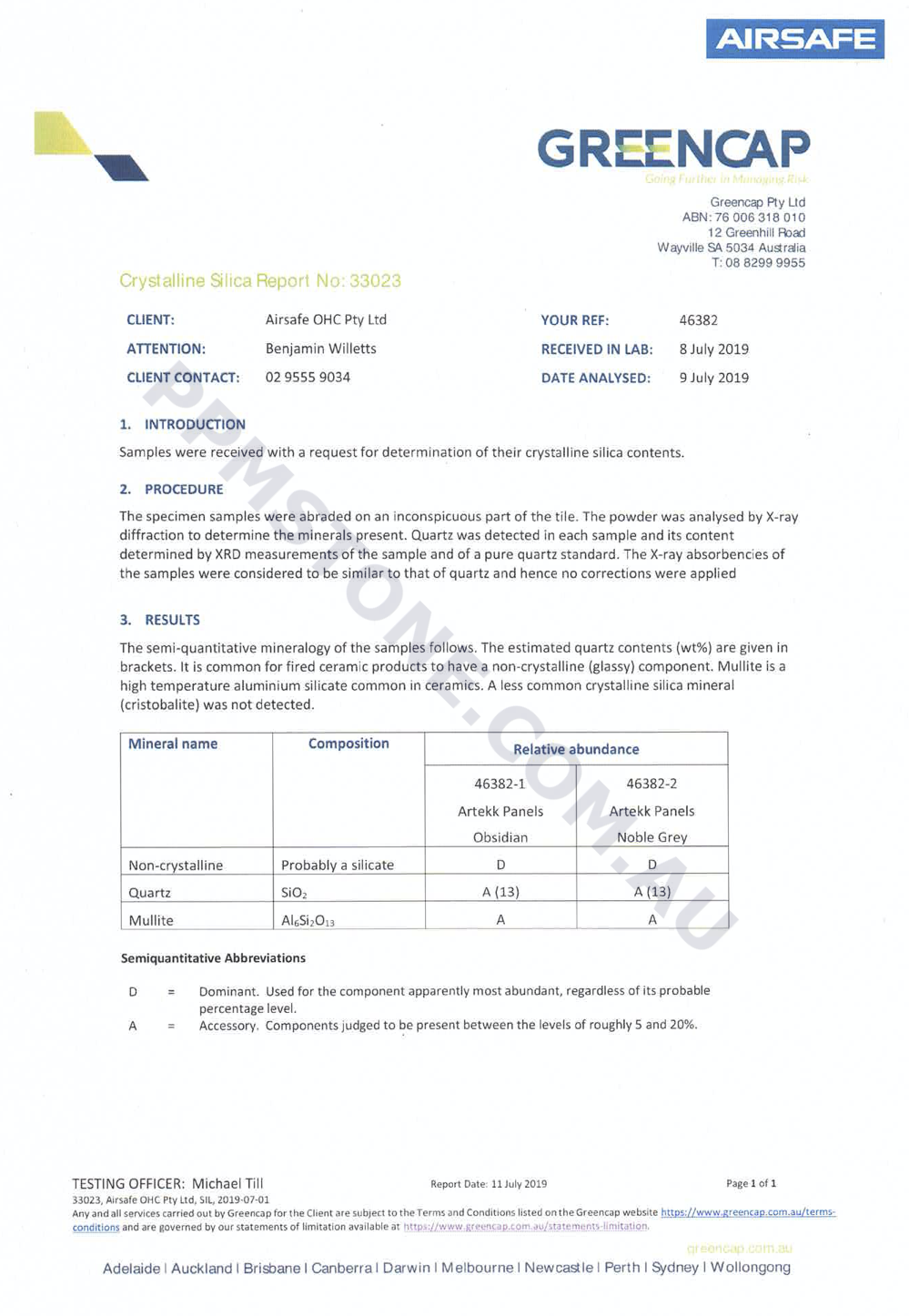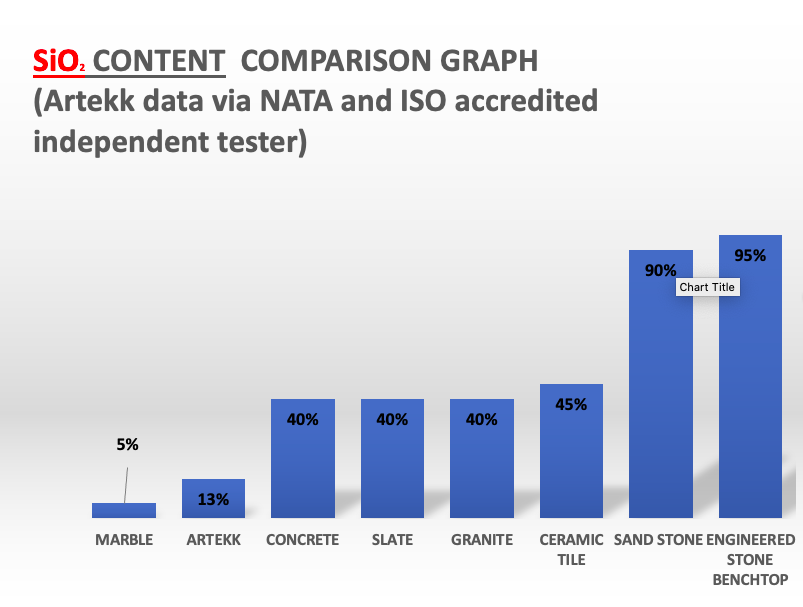Artekk Porcelain Panel or SMES (Sintered Molecule Earthenware Slab) is unique in its composition, creation process and performance characteristics, with a fascinating history spanning millennia.
The subject of hard surface materials safe and responsible use is rightfully very much in focus today, so, we will start by establishing Artekk’s inherently extremely low SiO2 content when compared to most popular Natural Stone varieties, concrete, and the relatively recently introduced non-sintered composite material commonly known as Engineered Stone.
Importantly the Artekk Porcelain SMES product test data referenced, is provided by GREENCAP Pty Ltd, one of Australia’s leading independent NATA and ISO accredited Hazardous materials testing, analysis, and risk management organisations. Profile below highlights critical accreditation.

Comparative product SiO2 content used in the graph below is drawn from data published on the web by various Australian and International industry groups and safety authorities.

As evidenced in the above graph, Artekk Porcelain SMES tested SiO2 content of 13% is extremely low in comparison to other commonly used hard surface materials, with the exception of Marble (a mass of interlocking calcite crystals produced when dolostone is subjected to heat and pressure). Heat and pressure are creation ingredients Artekk and Marble have very much in common.
Exploring the raw material make up of Artekk Porcelain SMES is important in understanding how it achieves its ‘in sum’ superior mechanical and chemical performance characteristics when compared to all alternative stone genre substrates, natural and manufactured.
The primary constituents of SMES are Feldspar, Clay, and Kaolin. Feldspar importantly, has in its composition primarily Flint and Aluminium silicate, together with a range of the seventeen known rear earth minerals, which combined are critical in the creation of the unique final structure of Porcelain once sintered.
Artekk Porcelain SMES material components are blended, rolled, and repeatedly compressed under thousands of tons of pressure, to create a highly homogeneous rigid raw pre-fired slab, including through colouring veins in some ranges, and a range of working surface textures. The final surface beautification is applied using all natural clays and rear earth pigments, which fuse with the slab body during the firing/sintering process.
As has been the case for over 1000 years the raw porcelain is Kiln fired at 1273 degrees centigrade, liquifying and fusing all component molecules of the slab and pigments into a Sintered Molecule Earthenware Slab (SMES) of Artekk Porcelain. The resultant unique combined characteristics of high density, extreme hardness, superior durability and almost zero porosity, are all achieved whilst producing an incredible surface softness of touch.
Artekk Porcelain SMES superior performance characteristics, minimal maintenance performance and working life cost effectiveness, relative to all other hard-surface alternatives, including laminates and timber, are compelling reasons to make Artekk the first choice option.
Equally compelling, in relation to fabrication safety risk mitigation, is Artekk’s extremely low SiO2 content, at 86% less than mechanically inferior ‘Engineered Stone’, and far less than Concrete, Ceramic and almost all Natural stone products.
Artekk reinforce that regardless of what substrate is chosen as a desired, fit for purpose working surface, all surface substrate materials, must always be handled, cut, fabricated, and installed using compliant, appropriate, responsible safe working practices, as the imperative.

Contacts: Denny Chan 0434 873 946 - David Cole 0434 783 586 – Office (03)9070 4888


